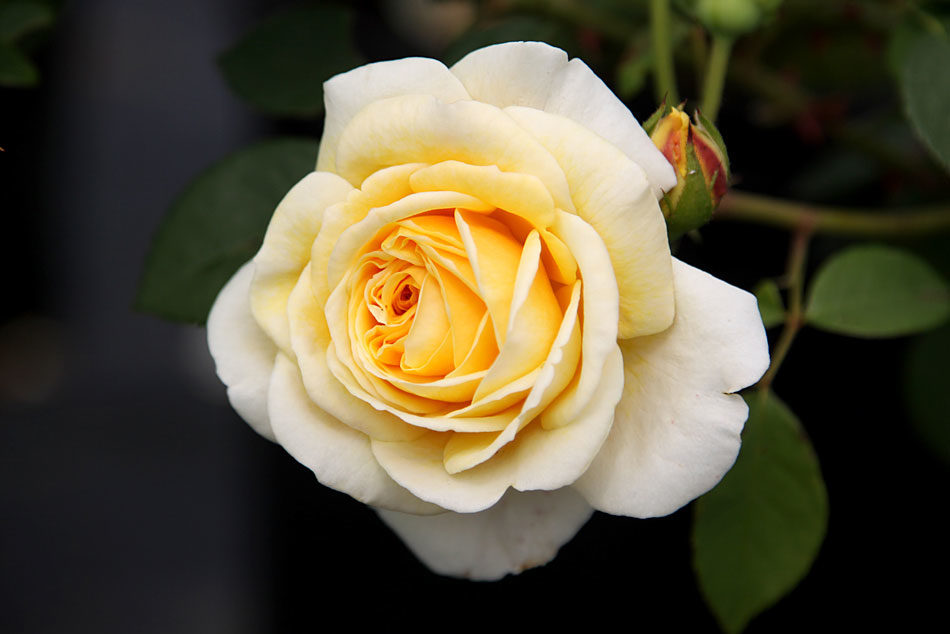TREES & SHRUBS
ROSES 101
One of the most recognizable flowers in the world is the rose. Roses are a woody, flowering perennial that include over three hundred species and thousands of cultivars.
Types of Roses
There are 9 different types of outdoor roses we carry that can be planted in the ground and enjoyed for years to come! There are many different flowering patterns within each of these types, including repeat bloomers (produce flowers in separate flushes throughout the summer). When choosing a specific variety, always consider the petal count as well. Petal count ranges from 4 to over 100 - the higher the petal count, the fuller the flower!
English / David Austin
Combines the highly-scented, beautiful form of an old rose with the repeat blooming and colour range of a modern rose. They have one of the highest petal counts of all the roses while being fairly low maintenance and disease-resistant.
Hybrid Tea
A cross of Tea Roses and Hybrid Perpetual Roes, they are one of the most popular types of roses with impressive flowers. They are repeat bloomers with single flowers per stem and are commonly used for cut flowers. That being said, they are considered fairly high-maintenance and are one of the least hardy rose types.
Floribunda
They are continuous bloomers with large clusters of flowers on strong stems. Typically, the blooms are smaller than Hybrid Teas but the petal count is about the same and they produce many more flowers. They are usually disease-resistant and hardy.
Grandiflora
A hybrid of Floribunda and Hybrid Tea. They are repeat bloomers with large, showy flowers either on single stems or in clusters of 3 or 5. The petal count is slightly higher than Floribundas and Hybrid Teas, and they are a hardy and vigorous grower.
Climbing
They are mostly repeat bloomers but some varieties are continuous and the petal count is about the same as Hybrid Teas. They are hardy, vigorous growers that can be trained to grow up trellises, arbours, and fences, though they typically require annual pruning and training to keep them neat.
Shrub
One of the toughest, hardiest, and most disease-resistant varieties of rose. Flowers are smaller than most other roses and generally have a lower petal count, however, they are produced in large quantities with repeat blooms. These are a fantastic rose for beginners.
Polyantha
A low-growing, compact rose with good disease and pest resistance. They produce small flowers but with lots of petals in large quantities.
Ground Cover
With a spreading and trailing habit, these roses are prolific bloomers and generally produce their blooms continuously throughout the summer. They are generally very disease-resistant and low maintenance.
Rugosa
These are one of the easiest roses to grow as they are low maintenance, disease-resistant, and cold hardy. Most varieties are fragrant and produce a large amount of "hips." They produce sporadic, generally single blooms from summer to fall. Unlike other roses, they do not like to be pruned and cannot be fertilized without sustaining damage.
Light
Roses are happiest in full sun, receiving at least 6-8 hours of direct sunlight per day to ensure they are healthy with plenty of blooms. With less sun, the plant will be tall and spindly, more susceptible to prest and disease problems, and have less blooms.
Water
Roses absolutely love water and the more water they get, the better they perform. However, watering correctly and at the right time is crucial to their health and development. Always water deeply and avoid getting the foliage wet. Be sure to hold the hose at the base of the plant for about a minute to allow the water to soak down through the soil rather than just the top inch. It is also best to water in the morning as this allows any water that is resting on the leaves to dry in the sun, thus decreasing the likelihood of disease.
Remember that the amount you water will vary throughout the season, so be sure you increase your watering as the temperature increases. Different soil types will hold moisture differently - for example, clay soils can hold moisture for long periods of time and sandy soil can drain too quickly, leaving your roses dry.

Fertilizer
If you are planting a new rose, use a transplant fertilizer, plant starter or bone meal to help them establish their root systems. You'll also need a low-strength liquid fertilizer throughout the first growing season until established - granular and slow-release fertilizers can burn new rose bushes if they dry out.




